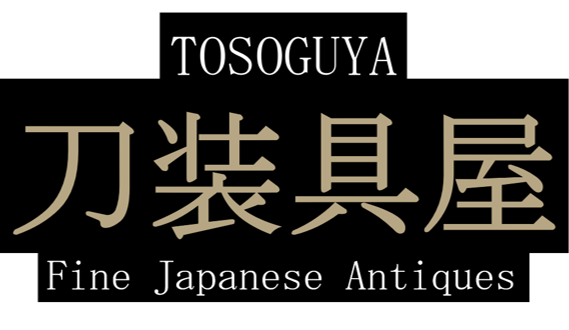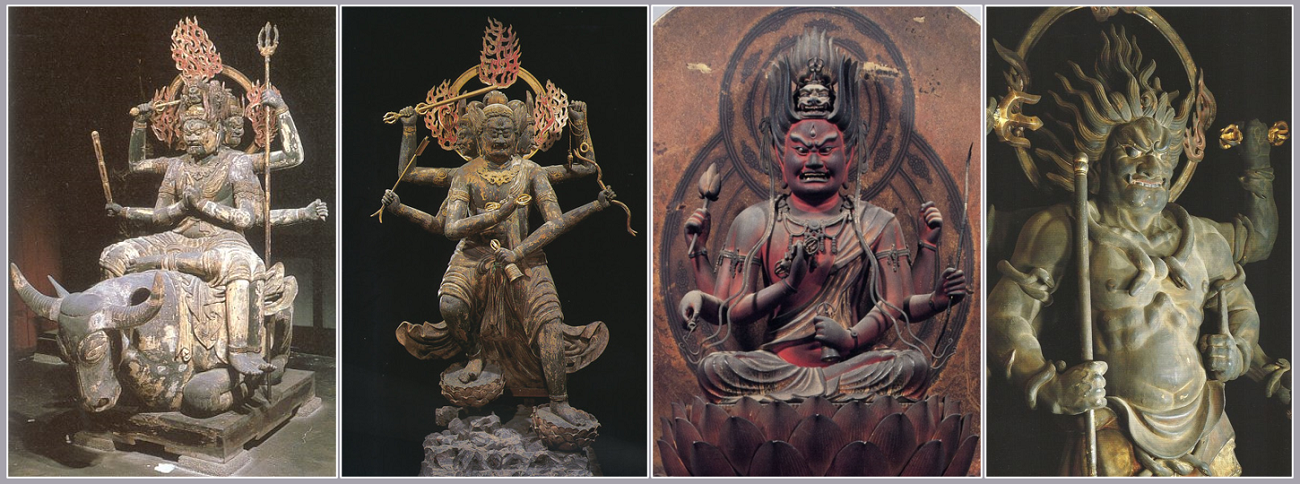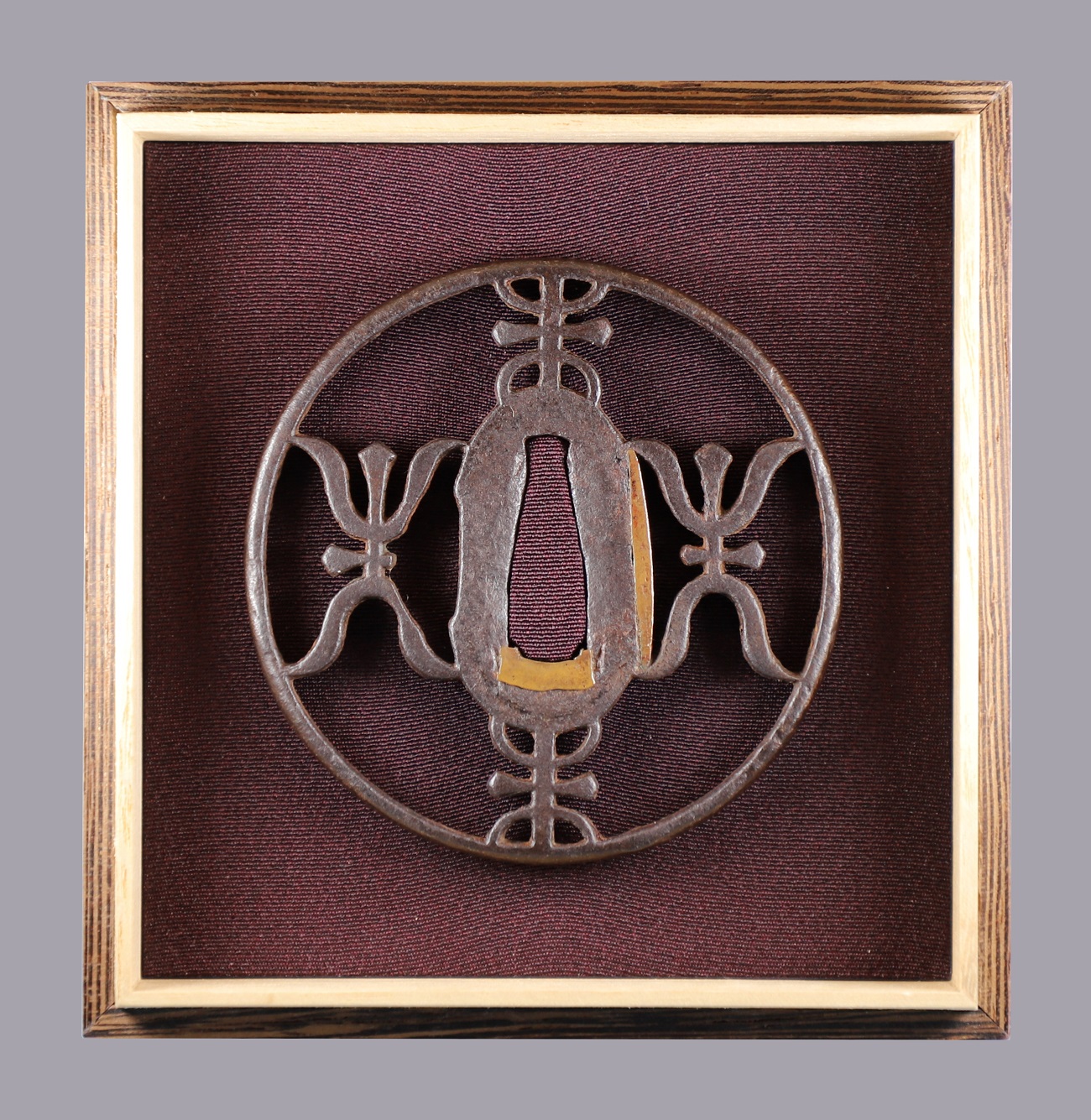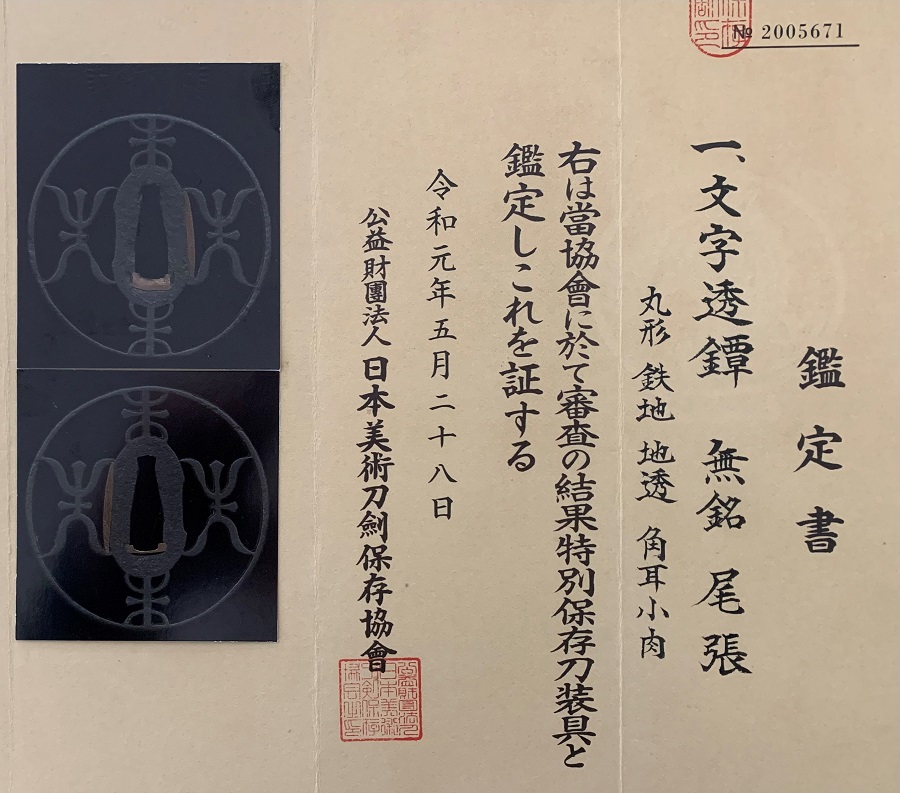

Owari Tsuba
Iron Owari tsuba (京透鐔) with an esoteric Buddhist motif of characters or moji (文字). The 4 cut-out, positive silhouette or ji-sukashi (地透) elements of this tsuba represent both recognizable characters and esoteric Buddhist iconography. The upper and lower elements are the seal-script character "朱 or Shu", meaning the color vermilion. The elements on the sides are composite esoteric icons, consisting of a trident, vajra (thunderbolt), and two-bladed arrow. This complex iconography is thought to represent a group of Buddhist deities called Myō-ō. The most commonly known member of this group is Fudō Myō-ō. These guardian figures are frightful protectors of the Buddhist faith. They are pictured as angry warriors, with red or black faces, often wreathed in red flames, carrying various weapons and Buddhist religious implements (such as the trident, sword, bow & arrow, vajra, rope), sometimes standing on vanquished demons. These dieties are ferocious emissaries of Buddha, revered by the Tendai and Shingon sects. Hence the imagery of this tsuba can be regarded as a protective and guiding motif for the owner.

The round or maru-gata (丸形) tsuba has a squared rim with slight rounding of the edge, termed kaku-mimi ko-niku (角耳小肉). The martial, protective motif suggest the tsuba was manufactured towards the end of the Sengoku period, while samurai were still engaged in fighting. The slightly smaller size would work well mounted on a single-handed, or katate-uchi katana, which was in fashion at that time. Originally the tsuba was designed without hitsuana, but it is clear that at some point in its life, it's owners utlized it with both kogai and kozuka, as evidenced by the sekigane insert and trimming of the vajra motif. This is a very intersting tsuba, as it represents the desire for divine protection during the last turbulent decades of the Sengoku period, before Japan was unified. Comes in a custom fitted box.
Translation of the NBTHK Tokubetsu Hozon paper description follows:
文字透鐔 (Moji sukashi tsuba)
無銘 尾張 (Mumei Owari)
丸形 鉄地 地透 角耳小肉 (Maru-gata tetsu-ji ji-sukashi kaku-mimi ko-niku)
Reiwa 1st year (2019) May 28th
Measurements: 7.4cm x 7.4cm x 0.45cm rim
Momoyama to earliest Edo Period (桃山 - 江戸初期), ~1575 - 1615.
SOLD

